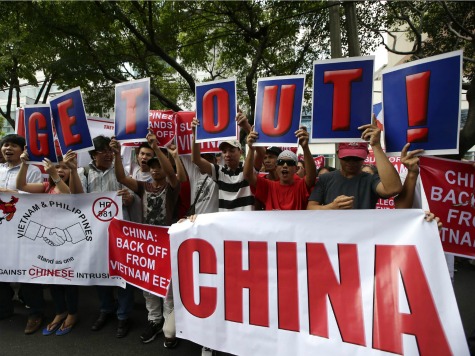Sixty prominent members of Vietnam’s Communist Party, including a former ambassador to Beijing, signed a letter on July 29 urging political and economic reforms that would divorce Vietnam from reliance on China, according to a July 30th report by the German Press Agency.
The highly symbolic action is a call to abrogate Vietnam’s long-standing economic and military relationships with China. Such action would open the way to consider discussions with the United States about teaming with American business and potentially joining the U.S.-backed Southeast Asia Treaty Organization military alliance.
The Vietnamese leadership had tended to prioritize a cordial relationship with China, which was North Vietnam’s ally in the long struggle take control of South Vietnam. Vietnam began moving to counterbalance its relationship with China last November. Vietnamese Communist Party General-Secretary Nguyen Phu Trong visited India and signed a number of “memoranda of understanding” that gave India exclusive exploration rights in five of its off-shore hydrocarbon blocks and promised to expand security, defense, and law enforcement ties.
China claims that since 1947 it owns virtually all of the South China Sea that stretches 1,000 miles over many of the world’s busiest sea lanes, from Taiwan to Malaysia. China calls this area the “nine-dash line,” but Vietnam dismissively calls it the “cow’s tongue line.”
In what appears to be a retaliatory response, China from May 9th through early July aggressively violated Vietnam’s territorial waters by sending a fleet of 60 ships to support drilling for oil just 80 miles off of Vietnam’s coast. The Hanoi government dispatched coastal patrol boats to harass the Chinese but did not directly confront the larger Chinese war ships.
The Chinese official state press publically lashed out over what it called Vietnam’s “interference.” A hawkish newspaper editorial called on Beijing to teach Vietnam the “lesson it deserves.” That language closely resembles Chinese Premier Deng Xiaoping’s 1978 speech demanding that China teach Hanoi a “lesson.” Less than a year later, China invaded the North and killed 30,000 in a two-year military stalemate called the Sino-Vietnamese War.
The Chinese media’s incendiary language triggered other Vietnamese communist factions that have been demanding changes to Vietnam’s one-party-rule to fund anti-China rioters clad in T-shirts bearing the face of Vietnam’s revered founder Ho Chi Minh and waving the communist hammer and sickle flag.
The demonstrators burned down dozens of large Chinese and Taiwanese factories in Hanoi and Ho Chi Minh City as the protesters screamed “Down with China!” By early June, about 1,000 Chinese were injured, four dead, and tens of thousands of workers and managers sent home to China.
China retaliated on July 27th by posting a statement on its Ministry of Defense website announcing five days of live-fire naval drills in the Gulf of Tonkin off of Vietnam’s Haiphong harbor.
The Vietnamese people I met on my recent trip to Ho Chi Minh City are seething with animosity toward their historic foe. They know that oil-poor China passed the United States last year to become the world’s largest importer of crude oil. With China importing about six million barrels a day and demand growing by at least 10% per year, they believe China is desperate to gain control Vietnam’s promising energy resources.
The Vietnamese Communist Party elites’ letter states, “Vietnam has made a lot of concessions with China, and is paying a high price. The more Vietnam makes these concessions, the more China dominates.” According to Stratfor Global Intelligence, the letter represents a consensus by the Vietnamese Communist Party to now forcefully confront China.
The violent riots have undermined the investment climate for the Chinese and Taiwanese investors in Vietnam, and many are leaving. Yet the nation is becoming more attractive for international investment after cutting its personal and corporate tax rate this year from 25% to 22% and scheduling the rate to fall to 20% next year.
The key to Vietnam’s strategy to counter-balance the Chinese is to attract American private investment and begin discussions to potentially join the American-backed Southeast Asia Treaty Organization.
The classes I taught on business strategy over the last two weeks focused on strategies to privatize large swaths of the Vietnam’s state-owned economy to gain competitiveness against the Chinese. To tangibly demonstrate the Vietnamese government’s desire to befriend Americans, three Starbucks were opened in Hanoi last week.
The author welcomes feedback and will respond to reader comments.
Chriss Street just returned from teaching “Entrepreneurship and Capitalist Business Strategy” at Ho Chi Minh University in Vietnam.

COMMENTS
Please let us know if you're having issues with commenting.